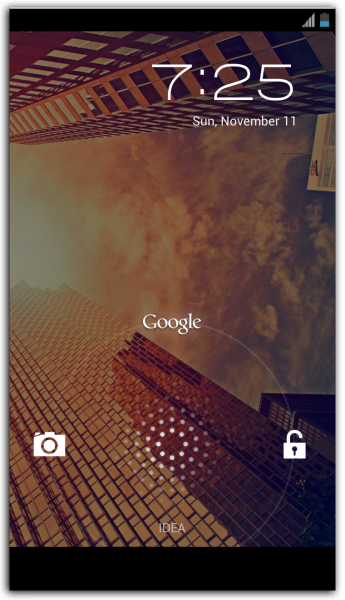Android during the Gingerbread phase was considered to be slow, laggy and badly designed. Ice Cream Sandwich changed that. All of that. Then came Jellybean, blowing everyone’s mind with Google Now.
Now here’s the thing, though the actual or stock versions of ICS and Jellybean are good, the skinned versions like Touchwiz, Sense or Motoblur are just inferior. Recently, I’ve got a Galaxy Nexus for myself, which is now running 4.1.1 and here’s how the software experience compares to the skinned versions of Android.
Interface
Until ICS, Google never cared much about interface in Android. With ICS, they have introduced Roboto – a clean new typeface, new UI concepts like Holo, UI transitions and all.
Jellybean, on the other hand, was about polishing ICS rather than making a whole new version of Android.
To add to this, there are an increasing number of apps on Playstore which stick to Android’s design guidelines. Quora, TED, Pocket and many others – the list is just too big. All this make up to an OS with a unified interface – you’ll understand why this is important if you’ve ever used iOS or WP.
Pretty much all the skinned versions of Android change the look and feel of the OS and most often, they make it ugly. Or else, I’ll put it like this – the Metro and Desktop UI in Windows 8 never mix and the switch is never smooth. Likewise, in skinned Android, the Touchwiz/Sense over Holo UI looks totally out of place.
Faster & Smoother
In Jellybean, you can see that, Project butter and triple buffering did make a difference in smoothness of OS.
Here I’m not saying Touchwiz is laggy on Galaxy S3 or that Sense is slow on One X. They are indeed snappy, but that’s only on the high-end phones. Use any of the mid-range Android devices, be it the Xperia, Galaxy or other smartphone series and you’ll know how degraded the user experience is.
Nexus S, on the other hand, has hardware on par with many mid-range Android devices and is very responsive. That’s simply because there is no extra UI layer in Nexus S, it’s just pure Android.
OS Updates
Almost an year back, Samsung announced that there will be no ICS update for Galaxy S, one of their flagship phones at that time. Their explanation was that, Galaxy S doesn’t have enough RAM to run ICS along with Touchwiz.
Android 4.2 is going to release on November 14th and less than 3% of Android devices run the current version i.e. Jellybean.
Nexus handsets are the only exception for this problem – Nexus One for example had support till Gingerbread (starting with Eclair). Nexus S is still supported by Google and I won’t be surprised if it gets the 4.2 update too.
Ultimately, if you really can’t wait for OS updates, Nexus series is your best bet.
Bloatware
I had a HTC One V previously, which had a paltry 4GB internal memory. It had insane amount of preinstalled apps including 7Digital, SoundHound, Flickr, Facebook for HTC Sense and much more. Because it was running ICS, I could just disable these apps. Still, that doesn’t remove them from memory, anyway.
Touchwiz phones are no exception, sometimes the situation is more awkward – for example, Galaxy S3 running Jellybean will have two voice assistants – Google Now and S Voice.
It’s not all gold, anyway
While there are many advantages with stock Android, there are a few cons too.
Firstly, Android itself isn’t a ‘complete’ OS. It lacks a few basic things – a ‘Notes’ app for example. That’s something very basic. I myself use 3rd party apps for notes, but there is an obvious need for an inbuilt notes app.
There is no FM radio app. Or even a file manager. Or smart dialling. This is not a problem for someone like me who mostly relies on alternatives, but ideally, they should built-in.
Skinned versions of Android generally fix most of these issues. But, from what I can say, Google will look into these in the coming iterations of Android (Love how they’re bringing quick settings in 4.2 borrowing from Touchwiz).
Do you own a Nexus? Or are you sporting an AOSP ROM? Tell us what you think about it.

One Comment
Couple of points you can add:
1. Suggest that a Jellybean review might be late but on Dw we do not review things unless we use it. 😉
2. Add that it might be useful to our Indian readers who might be planning on buying a Nexus 7 tablet (with link) and possibly a Nexus 4 phone.
About Title: How Stock Android Jellybean is better than proprietary interface
Unless you think of a better one.